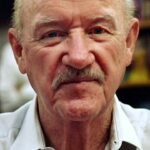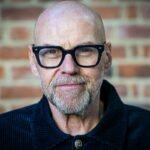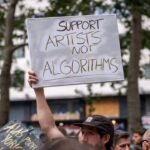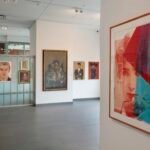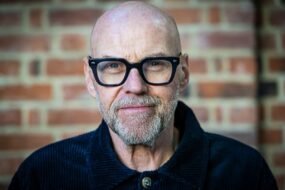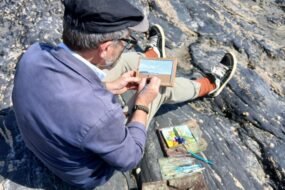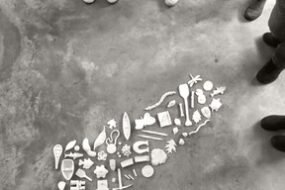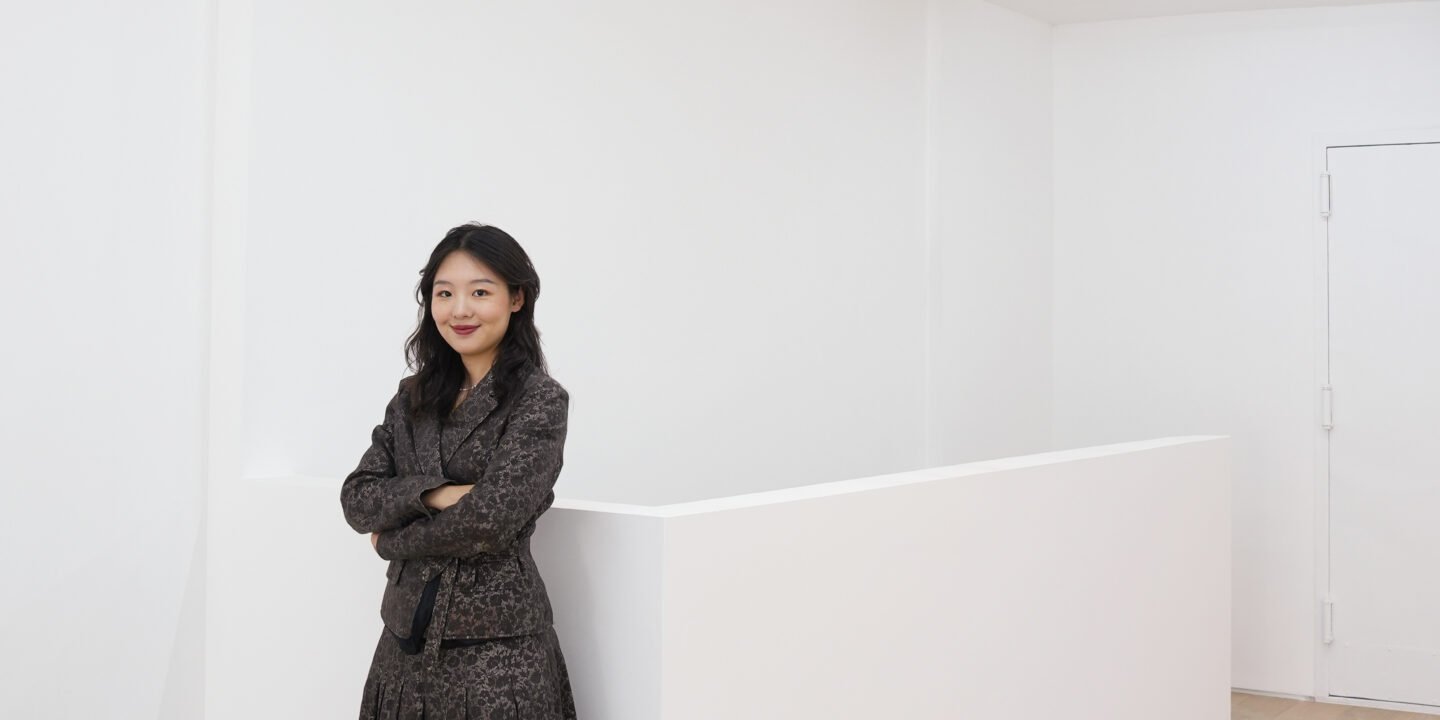
She soon realized that what they were doing wasn’t a minor thing. “Slowly, we were drawing attention to Asian diaspora artists and Asian immigrant artists. We helped cultivate a growing community, and it’s been amazing to be part of that,” she reflected. “It’s been rewarding to see the artists we supported getting bigger gallery shows, collaborating with larger galleries.”
From the beginning, LATITUDE Gallery aimed to be a self-sustaining artistic hub where people could grow together, find support and have a voice. “We started to get on the map not just because we’ve worked hard, but because our artists, colleagues and even former interns are doing so well. They’ve gone on to work with others, helping us all become more visible in the scene. That was crucial for us to expand and widen our reach.”
Providing career opportunities not only for other Asian artists but also for young art professionals has also been integral to Zhou’s vision. To that end, LATITUDE Gallery developed a dynamic internship program to support Asian immigrants, Asian graduates and foreign students seeking to build careers in the arts. Each intern works one day a week on a rotating basis, assisting the gallery while gaining valuable experience. “Many immigrants and professionals in the arts need a starting point, too. I’m happy to offer them opportunities through internships or recommendations to people I know,” Zhou explained. “It’s been a great way to contribute to their professional growth and provide visa support while containing costs.”
Although Zhou has taken some risks, she said she’s still cautious when it comes to spending. “I’ve always played it a little safe to ensure that it’s not just about my ambition, but also about sustaining the gallery and ensuring its long-term success.” LATITUDE Gallery has participated in fairs like NADA, Untitled Miami and, more recently, fairs in Asia such as 021 in Shanghai. Still, Zhou has been careful not to overexpose the gallery, which has primarily focused on less traditional approaches, such as gallery collaborations, to branch out and reach new audiences and geographies while keeping things fresh.


At the same time, the gallery’s basement will serve as a space for experimental, conceptual and boundary-pushing exhibitions—many of which will be mounted in collaboration with other galleries. “We’re thinking beyond just New York, even to places like China or Berlin, serving as a bridge between regions,” Zhou said, describing the model she’s been envisioning as older players are stepping back and the old structures no longer seem to be working.
“In the past, I’ve collaborated with galleries in China and other places, and I think if you keep an open mind and stay flexible, you can make things work. New Yorkers are really good at making things happen when people are determined.” She’s committed to bringing that same energy into LATITUDE’s new space by partnering with galleries, artists and even scrappy DIY art groups to continue uplifting new voices.
For Zhou, the formula she applied from the beginning—growing a broad community—remains the key to allowing a new generation of dealers to do things differently and thrive. Embracing collaboration, engaging the public and extending programming beyond exhibitions is what she believes will drive success.
“We started with the idea of supporting the artist community, as I was once an artist myself. But over time, I realized that curators, writers and art administrators are also part of that community,” she considered. “LATITUDE can be their home, where they begin their careers and learn something new. And hopefully, in the future, they’ll return to support our programs.”
LATITUDE’s new space opened with a group show, “Birth of the Between,” curated by Neil Jiang—a collector and friend who has been close to the gallery throughout its growth. For Zhou, the collaboration is another way to make collectors more participatory, helping them feel directly involved in the gallery’s mission. “I feel like art collectors, especially immigrant collectors from China, are also a part of that community. Sometimes they face discrimination, too, and they’re working to maintain an image of being thoughtful collectors—not just people with money, but passionate ones who study and understand what they’re buying.”


Zhou admitted that building a community over time is slow work—you can’t expect quick rewards. But she genuinely enjoys it, and she’s deeply committed to it. “Over time, I’ve seen my community grow bigger, and I realized that the collector community, art professionals and artists’ circles have merged in a way. I want to keep this ecosystem thriving, which is why I’m open to collaborating with other galleries, sharing resources and connecting people. It’s about creating a world where we all know each other and come from this space.”
She recalls the uncertainty during the pandemic and the chaos surrounding the 2020 election, and how, in that moment, it became clear how important it was to be an anchor for artists. “All this gave me a sense of purpose and hope,” she said, adding that for some gallerists, these challenges become a reason to try one more time, while for others, it’s a one-time gamble—a burn-it-down moment in the hope of building something better, stronger, more sustainable. “After the pandemic and all the ups and downs in the economy, this is really about the persistence of independent gallerists.”
Today, LATITUDE’s mission of creating a community platform feels even more essential, as the art world navigates a rapidly shifting market and a fragile political climate marked by division and anti-migration rhetoric. “I think it’s crucial for all community members—collectors, artists, curators and art professionals—to come together, stay connected and stick together. Otherwise, no one will truly survive in this environment.”




